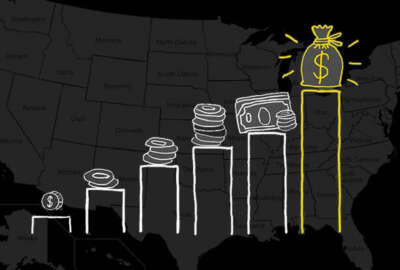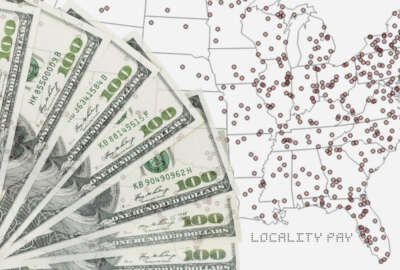
UPDATED: The downside of the 2020 pay raise — no room at the top
The down side of the pay raise that takes effect next week is that more highly successful, long time civil servants will be hit by the pay cap.
The downside of the pay raise that takes effect next week is that more highly successful, long time civil servants will be hit by a pay cap. It means that thousands of people at or near the top step of GS-15 will either get no raise, or only a portion of the adjustment available to most rank and file employees. If you’re confused, welcome to the club.
Here’s an updated Sept. 23, 2019, Federal Report column that gets down into the weeds: Thanks to the locality pay the 2020 pay cap will be $170,800, up from $166,500 in 2019.
If your boss doesn’t grin when folks speculate about the size of the 2020 federal pay raise, they have a good reason.
Even if white collar government workers get a pay raise next year—which they will—thousands at the top of the career civil service ladder, in dozens of major high-wage cities, will actually see their take-home pay drop in 2020 because of a pay freeze for top feds even as health insurance premiums for most federal workers and retirees will be going up in January. Some by a lot!
While pay for rank-and-file civil servants is going up in 2020, many at or near the top of GS-15 will feel the impact of the cap, which in 2019 was $166,500, has now bumped up to $170,800.
The pay “cap” has long been a problem for GS-15 workers in New York City, Philadelphia, Washington D.C., Baltimore and other high-wage areas where salaries are linked to local private sector wages for similar jobs. But workers at the top of their grade can’t get an increase until the cap for executives above them is raised.
When the 2020 pay raise kicks in, many more in lower pay steps will join them. Premiums for the Federal Employee Health Benefit Program (FEHBP) are expected to jump next year but because of a cap on federal salaries, many employees at the top steps of GS-15 can’t get a raise until the cap is raised for executives above
For several years now, salaries of thousands of workers across the country at the top steps of GS-15 had their pay capped because of the executive pay freeze. The problem for those at the top is that their health insurance premiums, like those of other federal and postal workers, are going up in 2020. The new higher premiums will be announced next month. Net result: higher premiums/no pay raise/reduced take-home pay. They’ll actually make less next year then they are getting now.
In addition to workers already capped at $166,500, hundreds—maybe even thousands more—of people at lower steps of the GS-15 ladder will also be capped next year. Each of the 15 General Schedule grades have ten longevity pay steps. In the Washington D.C.-Baltimore region, the $166,500 pay cap currently includes steps 8, 9 and 10. After the next pay raise it will cap salaries of workers at lower steps of their grade. Despite the new higher pay cap many workers at the top of GS-15 still won’t get any or all of the 2020 pay raise. The GS-15 pay cap now applies to workers in GS-15 steps 7 through 10. That is also true for workers in the metro-Houston locality pay zone.
The 2019 $166,500 pay cap now applies to the two top steps of GS-15 in Philadelphia-Camden. In Detroit, Warren and Ann Arbor, feds are capped and will get no raise in steps 8, 9 or 10. Chicago feds in the top three steps of GS-15 are also already capped, many in lower steps will move up against the cap and get zero or reduced raises because of it.
Nearly Useless Factoid
By Alazar Moges
Guinness estimates that 93,000 liters of beer are lost in facial hair each year in the UK alone.
Sources: Mental Floss
Copyright © 2024 Federal News Network. All rights reserved. This website is not intended for users located within the European Economic Area.
Mike Causey is senior correspondent for Federal News Network and writes his daily Federal Report column on federal employees’ pay, benefits and retirement.
Follow @mcauseyWFED





